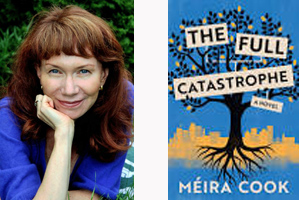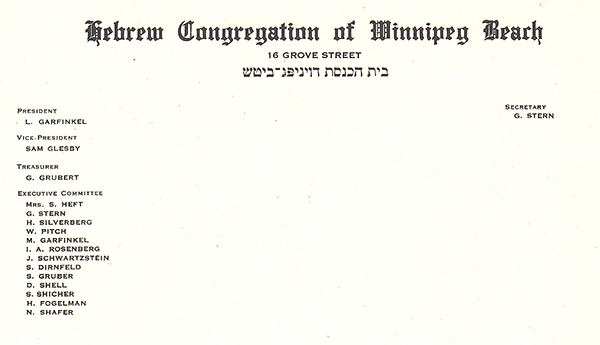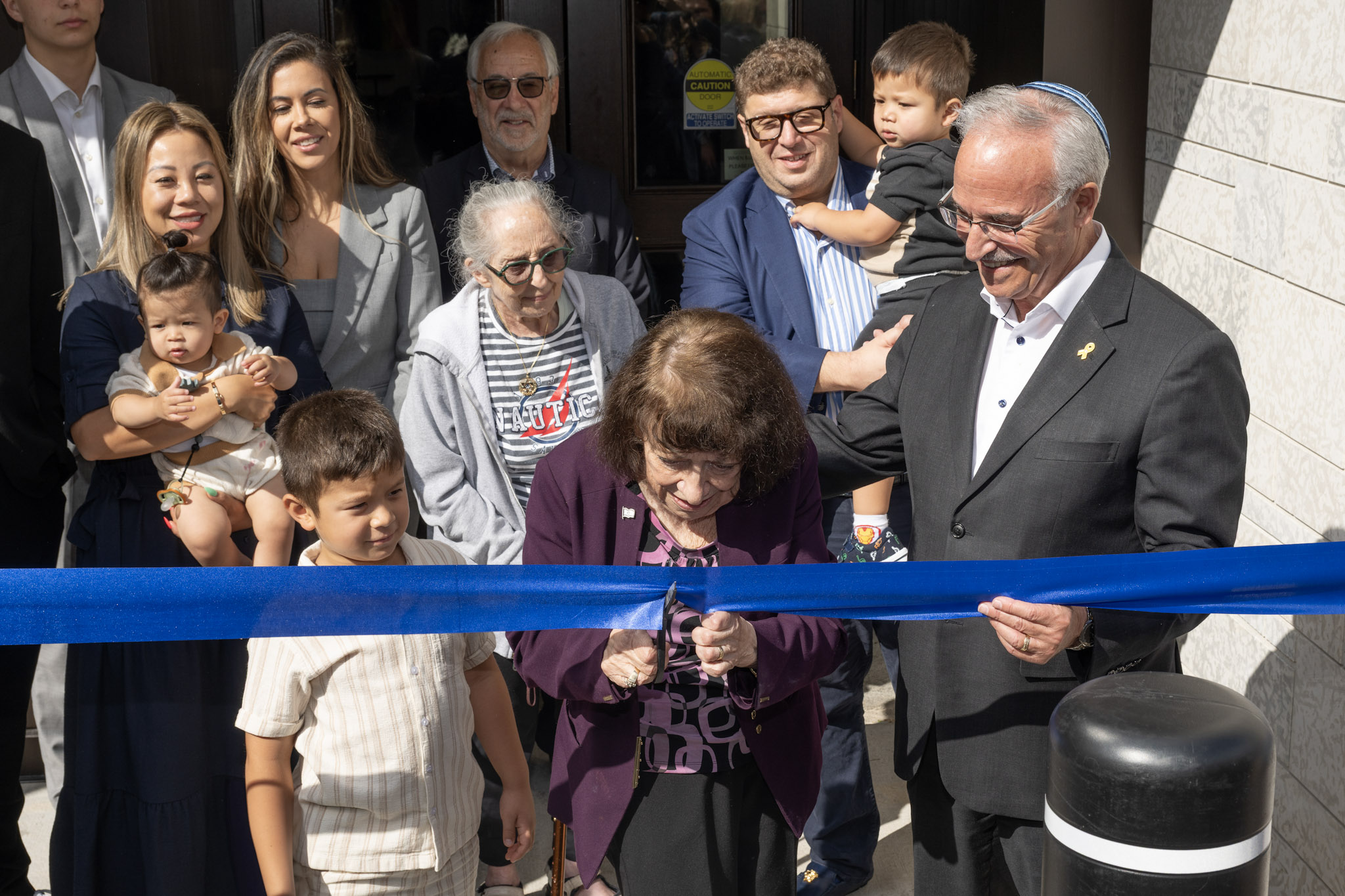Local News
Méira Cook’s latest novel is arguably her most “Jewish” one yet

Review by BERNIE BELLAN I’ve been following the career of poet and novelist Méira Cook ever since her name was first mentioned in this paper in an article written by my niece, Suzy Waldman, in 1995. At that time Méira (who is named for her late grandfather, Meir) noted that she had been sticking with poetry to that point, but was now considering switching to prose.
Well, what a transition it’s been. With the release of her first novel, “The House on Sugarbush Road,” in 2012, Méira has climbed near the top of the list of Manitoba’s most successful novelists. (That book won the McNally Robinson Prize for Book of the Year, by the way.)
In my review of “Sugarbush,” I noted that I was astonished by Méira’s facility with language, and I referenced her own description of having grown up in South Africa, having been exposed to the “snap and crackle of language”, whether it was spoken by whites or blacks.
That ear for language carried forward into Méira’s next novel, “Nightwatching,” which was released in 2015, and which was also set in South Africa. That book won the Margaret Laurence Award for Fiction.
Then, in 2017, Méira released her first novel set in her newly adopted home of Winnipeg, “Once More With Feeling.” I noted in my review of that book though that, if you haven’t read either of Méira’s prior novels, be forewarned:
“None of them unfold in a methodical, easy-to-understand pattern. As a matter of fact, the various chapters in ‘Once More With Feeling’ are largely disconnected. Characters are introduced, only to disappear for long stretches, sometimes appearing later in the book, at other times simply vanishing.”
Now though, Méira has, at long last, written a novel titled “The Full Catastrophe,” that might perhaps be the most accessible of all her novels to readers, in that it follows a more linear path in which characters remain throughout the novel without disappearing for long stretches. Like her three previous novels, however, “The Full Catastrophe” builds to a crescendo – and in this case, it revolves around a bar mitzvah.
Having said that, it must be apparent that this novel is the most clearly “Jewish” of any of Méira’s now four novels. The principal character, Charlie Minkoff, is a 13-year-old boy, who is born with “intersex” traits. Although Charlie clearly identifies as a boy, he is hampered by the ambiguity that his chromosomes have rendered.
Charlie though has a loving relationship with his zaida Oscar, who adores the boy and offers him the kind of emotional support that he so desperately needs.
Charlie’s mother, Jules Minkoff, on the other hand, is so completely involved in her own artistic pursuits that she leaves Charlie to fend for himself in the tenement building in which they live. (Jules, by the way, has lost the ability to speak – and she communicates with Charlie largely by leaving messages for him on a whiteboard.)
There are other characters who offer support to Charlie throughout the novel, particularly Weeza, a rough hewn female truck driver who strives to protect Charlie in the absence of Jules.
As I’ve already noted, Méira Cook is a master of fashioning dialogue. In “The Full Catastrophe” she demonstrates her facility with Yiddish idioms, as expressed by Oscar Minkoff. (Years ago Méira told me that she grew up in a household in South Africa where her grandparents spoke Yiddish. As a matter of fact, Méira speaks several languages, including Afrikaans and a few different black South African dialects. She was also a reporter early on, so being able to craft authentic sounding dialogue is something she honed while she was still quite young.)
Like her other novels, “The Full Catastrophe” is rich in description. Here’s a sample of how the author describes an ice warming hut on a Winnipeg river that Jules Minkoff has designed: “The ice was different from any he’d seen before. He’d been expecting kitchen cubes, the kind that turned opaque when wrenched from their trays. This ice was clear, so transparent he could make out fragile etchings of river scum in its depths – here a haze of silt, there a suspension of foam. The closer he looked the more he could see: a scrim of fish bones, a trail of bubbles, the current folding in on itself.”
In the ten years since Méira released “The House on Sugarbush Road” to today, it seems that she has also developed a keener sense of humour within her writing. Her first two novels, set as they were in South Africa, had as a backdrop the tensions between blacks and whites which pervade that country, and there was always a threat of impending violence within both those books.
“Once More With Feeling” took a decidedly less solemn path and it had several chapters within it that were predominantly humourous, although the book as a whole was quite serious.
In “The Full Catastrophe” Méira often injects entire scenes of dialogue that I told her in an email reminded me of Mordecai Richler in their tone. A good part of the book consists of emails sent back and forth between different characters, including a well-meaning teacher of Charlie’s by the name of Maude Kambaja, who wants Charlie to write an autobiographical essay for class, but who is dissatisfied with how Charlie avoids revealing much about himself.
Ms. Kambaja emails Jules Minkoff regularly to attempt to persuade Jules to exert her influence over Charlie to open up, but Jules consistently retorts in a most amusing and sarcastic manner.
Other characters in the novel, including two of Charlie and Jules’ neighbours in their building, which is known as the “GNC Building” (and from which all the remaining tenants will soon be forced to move as it’s about to be redeveloped), also carry on a hilarious exchange of notes for which Charlie serves as the messenger because they have such a strong dislike for one another.
Yet, through it all – including a crush that Charlie develops on a girl who herself is deeply scarred emotionally, the relationship between Charlie and his zaida is the overriding unifying theme of “The Full Catastrophe.”
Oscar Minkoff is himself a Holocaust survivor and after what he’s endured, he has nothing but compassion for his deeply troubled grandson (whose father abandoned him and his mother shortly after Charlie’s birth to join a Hasidic sect in New York).
Oscar decides that he wants to have a bar mitzvah – something he was never able to have in war-torn Europe, and he wants Charlie to participate with him in the event as well. As part of their preparation, Oscar and Charlie meet with a rabbi, during which they often engage in discussion of Talmudic passages.
(I was deeply impressed by the amount of research Méira put into developing those scenes. See adjoining sidebar for a more detailed examination of her writing process.)
No doubt, based on the past success of Méira’s other novels, “The Full Catastrophe” is going to enjoy a similar reception among her many fans. But, considering the more overtly Jewish storyline of this book, I would rather expect it to do particularly well with a Jewish audience. And, considering that Méira has been quite consistent in producing a new novel every three years for the past 10 years, I can hardly wait for her next one – which should be out in 2025, according to schedule.
“The Full Catastrophe”
Published by House of Anansi Press
376 pages
“The Full Catastrophe” will be publicly launched at McNally Robinson Booksellers on June 16 at 7:30 pm, when Méira Cook will be joined by Alison Gillmor in what Méira describes as “an evening of brilliant repartee, reading, and the joy of seeing each other once again!”
Méira Cook talks about her writing process
By BERNIE BELLAN Once I had finished reading Méira Cook’s latest novel, “The Full Catastrophe” I sent her a series of questions about this particular novel and about her writing process in general.
JP&N: Where did the idea for this particular novel come from? Was it something you had been mulling about for some time? I’m curious how someone with such a fabulous imagination comes up with their ideas?
Méira: My novel is a cross-over story for adults and teenagers about the different ways that masculinity is expressed in our contemporary world — whether religiously, socially, medically and familiarly — as well as the troubling ways that history intersects (collides might be a better word) with the present time. And I wanted to write about the relationship between two unlikely best friends, Oscar and Charlie, grandfather and grandson who, despite their differences in age and experience, love each other dearly.
JP&N: Was Charlie’s zaida based on one of your own grandparents in any way?
Méira: Charlie’s zeide is a product of imagination just as all my characters are. For me the imagination is a more hospitable narrative place than memory is because it owes no debt of accuracy to the dead. What has really delighted me is that some advance readers, including the journalists interviewing me, have shared very positive memories of their own grandparents that were sparked by reading Oscar. That ability for my imagination to connect with others’ memories is always tremendously rewarding.
JP&N: How much research did you have to do about intersex children? It was quite fascinating learning as much as I did from your book.
Méira: I did a great deal of research on intersexuality although I used relatively little of it as I didn’t want to bog down the story with too much exposition. My reading included scholarly texts, history, and memoir. It’s such an important and nuanced subject, and my research taught me so much about the history of intolerance and abuse relating to reassignment surgery, medical interventions, and the sometimes violent societal imposition of gender roles. This reading informed my writing in a fundamental way, but readers won’t come across it directly. My main concern in writing Charlie’s character is that he not be defined by his sexual characteristics. This, in my opinion, would repeat the violent impositions that I was reading about. Charlie’s got so many other interests, concerns, and qualities that have nothing to do with his sex chromosomes.
JP&N: If I have one quibble with the book, it’s that you have Charlie’s zaida constantly calling him “dahlink.” Don’t you think a term like that would only add to Charlie’s insecurity as a boy?
I would have preferred “boychik” as a term of endearment.
Méira: Luckily (and sometimes unluckily) we are not in charge of the terms of endearment offered us! They are what others call us. Oscar is so naturally loving, so open hearted despite his tragic experience in the Holocaust that he is the perfect friend, confidant, and grandparent for Charlie. His words to Charlie are always so filled with love that they could never make the boy feel insecure about anything. We should all be so lucky as to have a zeide like Oscar!
JP&N: I note that in past articles in our paper (beginning with a piece written long ago by my niece, Suzy Waldman), that you’ve stuck to a fairly consistent schedule when it comes to turning out something new: approximately every three years. Do you take a break between writing or do you go at it again immediately after finishing your last project?
Méira: I know many writers take breaks from writing after a large project, and I envy them. I love writing, and I wouldn’t feel healthy or grounded if I didn’t put in my time every day. I don’t work to a schedule until my publisher sets one, but I find the act of writing so necessary that I get out of sorts if I spend time away from my office.
JP&N: It goes without saying that this book is going to receive wide acclaim here in Manitoba. By the way, there were parts of the book that reminded me of Mordecai Richler when you have the email exchanges between various characters (or written notes, as the case may be). Your ability to capture someone through how they send an email, especially Ms. Kambaja, is just so real. You have such a great ear for dialogue. Does that still come from your reporting background?
Méira: Thank you for your kind words, Bernie. I’ve always loved Mordecai Richler, so the comparison is very flattering. I think my sense of dialogue comes from listening to people talk and reading good books. You need to be realistic with dialogue, but not too realistic, as real-life conversations aren’t usually interesting to outsiders. You need to write dialogue that sounds realistic but reads like fiction.
Local News
Thank you to the community from the Chesed Shel Emes

We’re delighted to share a major milestone in our Capital Campaign, “Building on our Tradition.” Launched in November 2018, this campaign aimed to replace our outdated facility with a modern space tailored to our unique needs. Our new building is designed with ritual at its core, featuring ample preparation space, Shomer space, and storage, creating a warm and welcoming environment for our community during times of need.
We’re grateful to the nearly 1,000 generous donors who contributed over $4 million towards our new facility. A $750,000 mortgage will be retired in November 2025, completing this monumental project in just seven years.
We’re also thrilled to announce that our Chesed Shel Emes Endowment Fund has grown tenfold, from $15,000 to $150,000, thanks to you, the Jewish Foundation of Manitoba’s FundMatch program, and Million Dollar Match initiative in 2024. Our fund helps ensure that everyone can have a dignified Jewish funeral regardless of financial need.
As we look to the future, our goal remains to ensure the Chevra Kadisha continues to serve our community for generations to come. Our focus now shifts to replenishing our savings account and growing our JFM Endowment fund.
We’re deeply grateful for your support over the past several years.
It’s our privilege to serve our community with care and compassion.
With sincere appreciation,
Campaign cabinet: Hillel Kravetsky, Gerry Pritchard, Stuart Pudavick,
Jack Solomon, and Rena Boroditsky
Murray S. Greenfield, President
Local News
Winnipeg Beach Synagogue about to celebrate 75th anniversary

By BERNIE BELLAN (July 13) In 1950 a group of cottage owners at Winnipeg Beach took it upon themselves to relocate a one-room schoolhouse that was in the Beausejour area to Winnipeg Beach where it became the beach synagogue at the corner of Hazel and Grove.
There it stayed until 1998 when it was moved to its current location at Camp Massad.
On August 2nd members of the synagogue will be holding a 75th anniversary celebration.

As part of the celebration anyone who is a descendant or relative of any of the original members of the first executive committee (as seen in the photo here) is invited to attend the synagogue that morning.
If you are a relative please contact Abe Borzykowski at wpgbeachshule@shaw.ca or aborzykowski@shaw.ca to let Abe know you might be attending or for more information about the 75th anniversary celebration.
We will soon be publishing a story about the history of the beach synagogue, which is something I’ve been writing about for over 25 years.
Local News
Vickar Family cuts ribbon on new Tova Vickar and Family Childcare Centre

By MYRON LOVE In the words of Larry Vickar, the Shaarey Zedek’s successful Dor V’ Dor Campaign “is not only a renewal of the synagogue but truly a renewal movement of Jewish life in our community.”An integral part of that renewal movement was the creation of a daycare centre within the expanded synagogue. On Monday, June 23, Larry and Tova Vickar cut the ribbon, thereby officially opening the Tova Vickar and Family Childcare Centre in the presence of 100 of their family members, friends and other supporters of the project.
The short program preceding the morning ribbon-cutting began with a continental breakfast followed by a welcome by both Fanny Levy, Shaarey Zedek’s Board President, and Executive Director Dr. Rena Secter Elbaze. In Elbaze’s remarks, she noted that Larry and Tova wanted their family (including son Stephen and family, who flew in from Florida) and friends at the event to celebrate the opening of the Tova Vickar and Family Childcare Centre, “not because of the accolades, but because, as Larry put it, he hopes that their investment in the congregation will inspire others to do the same.”
“When Larry and I spoke about what this gift meant to him and the message he wanted people to take away,” she continued, “I couldn’t help but connect it to the teachings of Reb Zalman Schachter-Shalomi whose book – Age-ing to Sage-ing – changes the whole way we look at the concept of ageing and basing it on our ancestral teachings.”
She explained that his concept of “Sage-ing” is based on three key ideas – Discover your meaning and purpose; accept our mortality and think about the legacy you want to leave.
“Larry spoke about these exact concepts when we met,” she said.
Elbaze also noted the presence of Shaarey Zedek’s newly-arrived senior Rabbi Carnie Rose, former Rabbi Alan Green, and area MLAs Mike Moroz and Carla Compton.
Larry Vickar expressed his great appreciation for all those in attendance. “Tova and I are deeply moved to stand here with you today for this important milestone in our community”, he said. “We are grateful to be surrounded by all of you, the people we care about, our family and friends… you who have touched our lives and played some part in our journey.”
